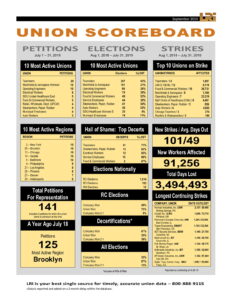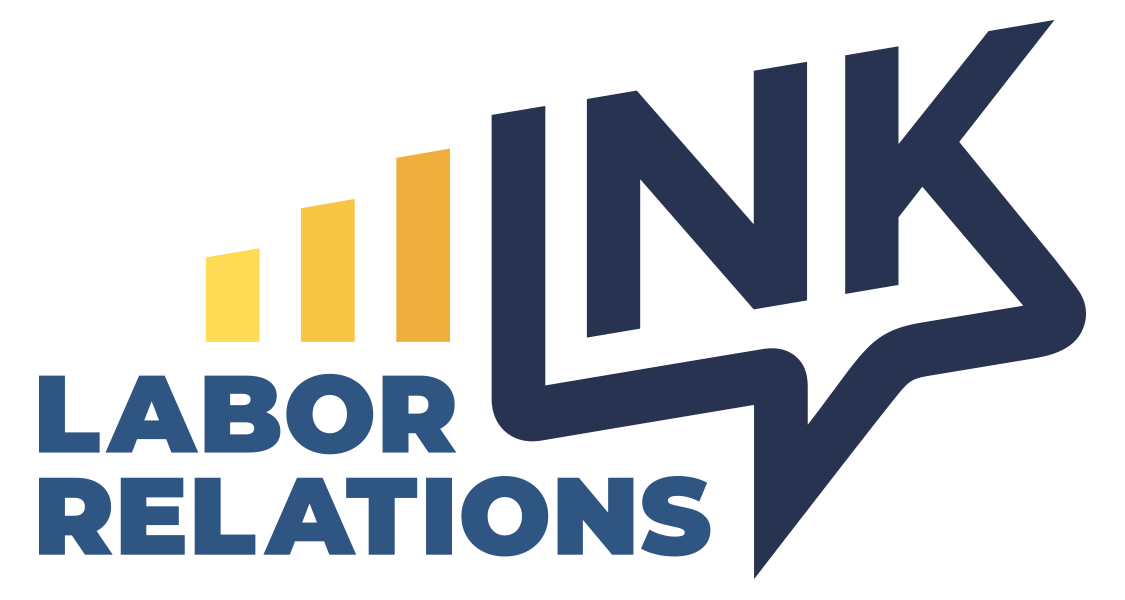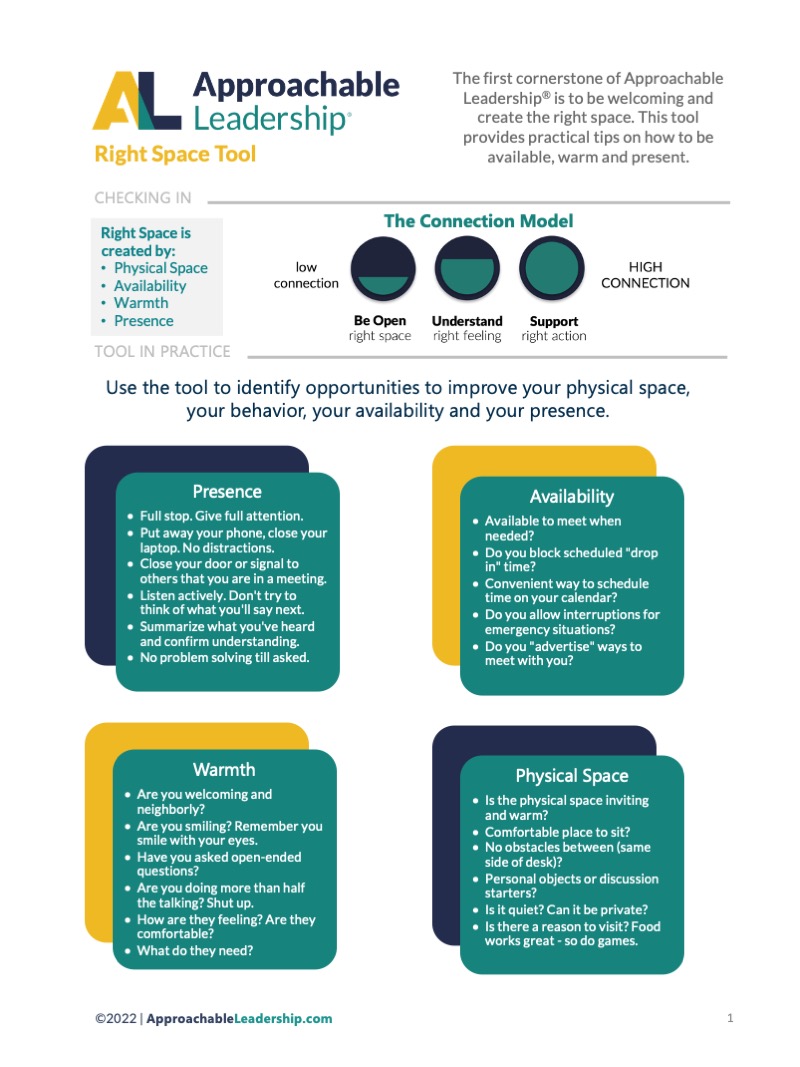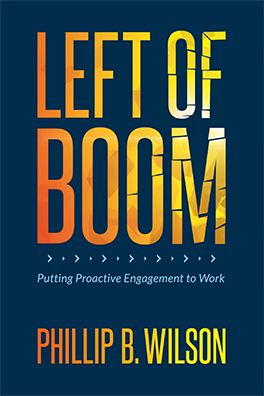In this issue:
- Laboring Towards 2020
- UAW Strike Precursor To A Mid-West Recession?
- Still Mobbed Up?
- Healthcare Strike Threatened by Kaiser Union Coalition
- UAW Corruption Scandal
- Scoreboard, Insight, and more…
The bottom of each story contains a link to the individual post on our site. ********** Labor Relations Insight By Phil Wilson A Wag-The-Dog Moment For The UAW? The UAW and General Motors are reportedly near a tentative agreement to settle the historic strike the UAW called over a week ago. Nearly 50,000 UAW members have lost pay, health benefits (and probably a lot of sleep) over the strike. It remains to be seen how much different the tentative agreement will be from the last offer by GM, or whether members will ratify any eventual deal. But the company offered some significant concessions in an effort to prevent or at least delay the strike. The strike is reportedly costing GM over $400M per day. The UAW says the strike is about making GM pay members back for major concessions made during the negotiations that pulled the company out of bankruptcy 10 years ago. They point to massive profits ($30 billion per year is commonly cited) to say that it’s time for GM to pay. They point to announced plant closings to say it is time to protect job security for members. They want to eliminate the two-tier wage system they were basically forced into during the last recession. GM for its part points to the fact that even with the two-tier system their “all-in” labor costs are nearly 25% higher than competitors outside of the Detroit 3. As they forecast business conditions over the next several years there’s not much optimism. The plant closings they’ve announced are positioning the company for an expected downturn in the global economy along with massive changes in consumer demand for vehicles. Winter is coming. None of these claims from the UAW or GM are completely right or wrong, and this round of negotiations was bound to require some big moves by GM to avoid a work stoppage. But many of those moves were made. Still 50,000 UAW members are on the street. Why? I’ve got a theory. Have you ever seen the 1999 dark comedy Wag the Dog? Just days before his next election the President of the US is caught in a sex scandal that is all but certain to end his political career. But a political spin doctor hatches a brilliant plan. They will create a fake war in Albania that will divert attention from the scandal. Then the President will swoop in to heroically “end” the war, just before the election. The war hero President wins re-election and the problem is solved. This strike feels a lot like a Wag the Dog situation to me. In case you haven’t kept up the UAW is in a crisis like we haven’t seen since Hoffa Sr. was running the Teamsters. The Justice Department has already gotten guilty pleas from numerous UAW officials and just days before the GM strike the FBI raided two homes, including sitting UAW President Gary Jones. Millions of dollars that were supposed to benefit UAW members were skimmed and used to line the pockets of UAW officials. This scandal reaches all the way to the top of the UAW, who may soon join the Teamsters under federal trusteeship. That’s a club you don’t want to join. The scandal isn’t just impacting the crooked UAW officials (and, to be completely fair, numerous Detroit 3 company officials) who are about to be perp walked. It is devastating to the reputation of the UAW while it desperately tries to stop bleeding current members and hopes to convince new ones to join. The crisis is demoralizing to its membership. If anyone ever needed a Wag the Dog moment, it is the UAW now. What better way to change the subject and divert attention than a historic strike? This new “crisis” puts a huge number of members on the street, going to war against a common enemy. It galvanizes the demoralized. Perhaps this even serves as an example of the “power” of unions the next time they try to organize a new location. GM employees come out the big losers in this situation. After this contract gets settled make sure to read between the lines of the press releases. Exactly what improvements are gained that weren’t on the table before? Plus remember that many times the last-minute offers pre-strike don’t get publicized so members never know what they really gained by sacrificing their pay and benefits. There is no question that the UAW leadership is corrupt. I just hope their corruption isn’t what led 50,000 workers out on a needless strike. Those members are just the beginning. A strike of this magnitude impacts many other businesses and communities. Some even believe this strike could be the tipping point into a recession in the Midwest. That could create further damage to these families and communities. Anyone asked to join today’s UAW should seriously consider whether they want to put their livelihood into the hands of “leaders” like this. You probably guessed my answer is no. Autonews.com posted this timeline infographic – click on the image to see the source and review all the related stories.  Link & Comments ********** Union Bailout Update The micro-unit strategy abetted by the Obama-era NLRB just took another blow when the Board ruled against it in the recent Boeing case. The 2017 PCC Structurals case began to unravel the micro-unit strategy by restoring the Board’s prior standard for determining the appropriateness of a petitioned-for bargaining unit. In Boeing, the Board further clarified the required analysis for this determination, using a three-step process:
Link & Comments ********** Union Bailout Update The micro-unit strategy abetted by the Obama-era NLRB just took another blow when the Board ruled against it in the recent Boeing case. The 2017 PCC Structurals case began to unravel the micro-unit strategy by restoring the Board’s prior standard for determining the appropriateness of a petitioned-for bargaining unit. In Boeing, the Board further clarified the required analysis for this determination, using a three-step process:
- Step One: Shared Interests Within the Petitioned-For Unit.
- Step Two: Shared Interests of Petitioned-For and Excluded Employees.
- Step Three: Special Considerations of Facility, Industry, or Employer Precedent.
Read here for details on how this played out in the Boeing case, which dismissed a proposed micro-unit of 178 employees out of the 2700 total production and maintenance employees at Boeing’s South Carolina plant. Although the issue of independent contractor status is far from resolved, a bit of good news was released by the NLRB. In Velox Express, the Board determined that independent contractor misclassification is not a stand-alone violation of the National Labor Relations Act. Social media policies received scrutiny again when CVS Health’s policies went under the microscope. Two of their policies were found to run afoul of the Section 7 rights. First, CVS required employees to identify themselves by their real name when they discussed the company and their work on social media. An advice memo released in the case stated, “The board has recognized that requiring employees to self-identify in order to participate in collective action would impose a significant burden on Section 7 rights.” CVS also restricted employees from disclosing “employee information” on social media. In response, the advice memo stated, “While the employer has a legitimate business interest in keeping customers’ and employees’ personal and medical information confidential, it has no legitimate interest in preventing employees from sharing contact information or discussing wages, working conditions or employment disputes.” The Board just made it easier for an employer to make changes to the terms and conditions of employment without first receiving permission from the union. In MV Transportation, the Board adopted the “contract coverage” standard followed by the D.C., First and Seventh Circuits. If the collective bargaining agreement can be said to “cover” the change, the employer can act unilaterally. The Department of Labor has proposed reinstating the Form T-1, requiring more financial disclosure by unions. The reestablishment of the use of the form would block the use of trusts by unions to circumvent reporting requirements in the Labor-Management Reporting and Disclosure Act. As the recent UAW training center scandal indicates, the move couldn’t come at a better time. Two members of the NLRB have signaled that they are ready to reconsider an over 40-year precedent regarding employers’ off-duty employee access rules. The third condition of the 1976 Tri-County Medical Center ruling is problematic for employers because it does not even permit an employer to maintain a rule that allows an employee to return to the workplace for innocuous reasons, such as to pick up a paycheck. Board members Kaplan and Emanuel wrote a footnote in the recent Southern Bakeries decision that they were prepared to reconsider this third condition in “an appropriate case.” Lastly, the Board has also signaled it is ready to curb abusive and profane speech currently protected by the NLRA, and is requesting amicus briefs. Click here to read the notice and submit briefs. Link & Comments ********** Laboring Toward 2020

Sen. Bernie Sanders
- The Protecting the Right to Organize Act, which would ban “right to work” laws that allow employees to opt out of paying union fees in unionized workplaces, even though they get the benefits of collective bargaining.
- The Schedules That Work Act, which guarantees predictable schedules for workers, or extra pay if they have to work irregular schedules.
- The Paycheck Fairness Act, which would bar employers from using an employee’s salary history to determine wages, ensure that workers have the right to discuss wages without retaliation, and require employers to justify any pay discrepancies.
- The Family Act, which guarantees up to 12 weeks of paid family leave to workers, funded through a payroll tax on businesses and employees.
- The Healthy Families Act, which would require most businesses to provide full-time workers with at least seven days of paid sick leave.
- The Domestic Workers Bill of Rights Act would essentially amend federal labor laws to include domestic workers. But it would also extend new benefits to them, such as guaranteed paid time off, privacy protection, and a written employment contract.
- The Raise the Wage Act, which gradually raises the federal minimum wage to $15 an hour and indexes future increases to wage growth. It also abolishes the sub-minimum wage for tipped workers.

Sen. Elizabeth Warren
 It seems anachronistic to talk about unions as havens for the Mafia, and most folks think of the more industrial unions like the Teamsters or the Laborers when they thinking about a union being “mobbed up.” The recent sentencing of Vincent D’Acunto, former secretary-treasurer of UFCW Local 2D in Brooklyn, dispels the myth that mob influence is a thing of the past. D’Acunto conspired with Genovese family soldier Vincent Esposito, son of the notorious late Genovese boss Vincent “The Chin” Gigante. In a racket run from 2001 to 2017, the conspiracy ring, which included several other Genovese soldiers and the secretary-treasure of another UFCW local, extorted millions of dollars of union funds from an unnamed Local 2D official. Link & Comments **********
It seems anachronistic to talk about unions as havens for the Mafia, and most folks think of the more industrial unions like the Teamsters or the Laborers when they thinking about a union being “mobbed up.” The recent sentencing of Vincent D’Acunto, former secretary-treasurer of UFCW Local 2D in Brooklyn, dispels the myth that mob influence is a thing of the past. D’Acunto conspired with Genovese family soldier Vincent Esposito, son of the notorious late Genovese boss Vincent “The Chin” Gigante. In a racket run from 2001 to 2017, the conspiracy ring, which included several other Genovese soldiers and the secretary-treasure of another UFCW local, extorted millions of dollars of union funds from an unnamed Local 2D official. Link & Comments **********  SCORE BOARD Who are the winners (and losers) of the labor movement? Don’t guess, just check the LRI Scoreboard View this month’s scoreboard (archives also located here). Download a PDF of this month’s scoreboard ********** Healthcare Strike Threatened by Kaiser Union Coalition 80,000 Kaiser Permanente workers in hospitals and medical facilities across the country are due to walk out on strike beginning October 14th. Management claims to have offered a deal better than one that SEIU-UHW touted as an example at another healthcare provider, and included guaranteed wage increases of 3% across the board each year through 2022, preserve an existing pension plan and creating a $40 million workforce development fund. But while the negotiating team was still at the table, the SEIU-UHW used the strike announcement as an aggressive bargaining tactic to get more than other Kaiser unions have received.
SCORE BOARD Who are the winners (and losers) of the labor movement? Don’t guess, just check the LRI Scoreboard View this month’s scoreboard (archives also located here). Download a PDF of this month’s scoreboard ********** Healthcare Strike Threatened by Kaiser Union Coalition 80,000 Kaiser Permanente workers in hospitals and medical facilities across the country are due to walk out on strike beginning October 14th. Management claims to have offered a deal better than one that SEIU-UHW touted as an example at another healthcare provider, and included guaranteed wage increases of 3% across the board each year through 2022, preserve an existing pension plan and creating a $40 million workforce development fund. But while the negotiating team was still at the table, the SEIU-UHW used the strike announcement as an aggressive bargaining tactic to get more than other Kaiser unions have received.  Even as SEIU-UHW is attempting to show their “muscle” to union members while at the bargaining table, they are going behind those member’s backs to attempt to suck more “dues” out of their paychecks. SEIU-UHW President Dave Regan is trying to slide a “partnership tax” of $.25 for every hour worked into the new contract, ostensibly for an education fund to be controlled by Regan. Link & Comments ********** UAW Corruption Scandal
Even as SEIU-UHW is attempting to show their “muscle” to union members while at the bargaining table, they are going behind those member’s backs to attempt to suck more “dues” out of their paychecks. SEIU-UHW President Dave Regan is trying to slide a “partnership tax” of $.25 for every hour worked into the new contract, ostensibly for an education fund to be controlled by Regan. Link & Comments ********** UAW Corruption Scandal  The UAW’s corruption scandal with Fiat Chrysler over the last couple years was just the tip of the iceberg. Since then, federal investigators have been led deeper and deeper into the bed of UAW corruption. Recent updates include:
The UAW’s corruption scandal with Fiat Chrysler over the last couple years was just the tip of the iceberg. Since then, federal investigators have been led deeper and deeper into the bed of UAW corruption. Recent updates include:
- The investigation into the misuse of training funds has expanded to General Motors.
- Former UAW official, Michael Grimes, plead guilty to wire fraud and money laundering.
- Late last month, the FBI actually launched a series of raids into six locations involving UAW officials, including the home of UAW President Gary Jones.
- In addition to investigating bribes, kickbacks, and phony labor negotiations, the FBI, the IRS, and the Labor Department are investigating whether the union made money from “tax-exempt nonprofit organizations connected to the UAW.”
At this point the investigation into corruption at the UAW has gone so deep that federal agents are considering charges under federal Racketeer Influenced and Corrupt Organizations laws. If RICO convictions take place, it could lead to a federal takeover of the UAW union. So far, eleven people have been charged. Link & Comments ********** Gig Economy

Gov. Gavin Newsom

Gov. Chris Sununu
 Sticky Fingers Current charges or sentences of embezzling union officials:
Sticky Fingers Current charges or sentences of embezzling union officials:
- Brian Ahakuelo – IBEW: $1,400,000
- Rober Peter – APWU: $34,500
- Thomas Popillo – CWA: $37,569
- Dana Pullman – State Police Assoc. of Massachusetts: $75,000
http://nlpc.org/index.php?q=union-corruption-update ********** Labor Relations INK is published semi-weekly and is edited by LRI Consulting Services, Inc. Feel free to pass this newsletter on to anyone you think might enjoy it. New subscribers can sign up by visiting: https://lrionline.com/free-stuff/newsletter-signup/ If you use content from this newsletter please attribute it to LRI Consulting Services and include our website address: http://www.LRIonline.com Contributing editors for this issue: Phillip Wilson, Greg Kittinger, and Meghan Jones You are receiving this email because you subscribed to receive our labor relations newsletters and updates. You can manage your email preferences by clicking the link at the bottom of any of our email communications. NOTE: if you are using older versions of Internet Explorer, read the text version, as the html may not load properly. We recommend upgrading to the latest version.







